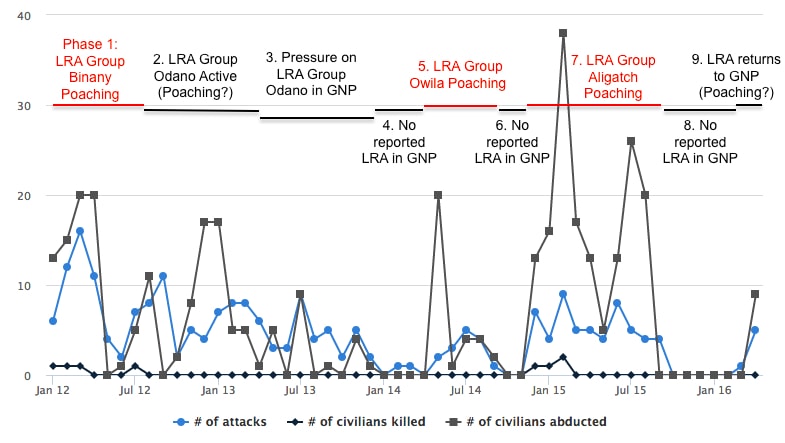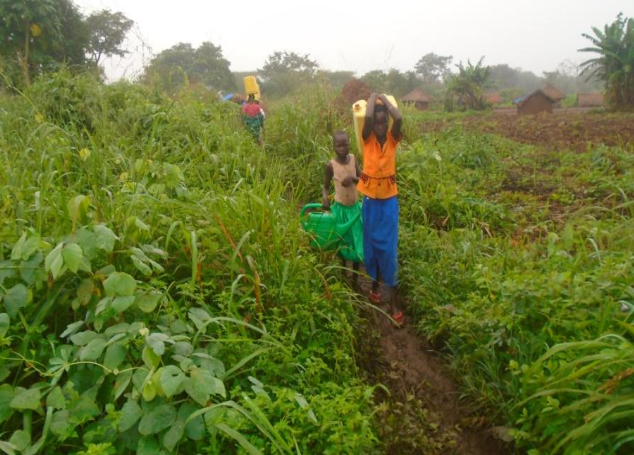The central African region spanning the borders of the Central African Republic (CAR), the Democratic Republic of Congo (DRC), and South Sudan is one of the most vibrant and naturally abundant places on earth. And yet, communities in this region, and the natural world around them, are facing incredible threats to their safety and livelihoods.
Due to severe isolation, this corner of the world is largely ungoverned and lacks infrastructure like roads, cell towers, and schools. These conditions allow and often cultivate volatility and insecurity, which makes children and families constantly vulnerable to new and changing threats to their safety.
One such emerging threat is the poaching and exploitation of the region’s unique wildlife. In recent decades, professional ivory poachers and rebel groups, like Joseph Kony’s Lord’s Resistance Army (LRA), have taken advantage of the isolation and instability of central Africa to carry out illegal and violent poaching activities, which is decimating the central African elephant population. In 1960, Garamba National Park was home to 20,000 elephants, but by 2003, that number had dropped to only 8,000. Today, due in large part to illegal poaching, less than 1,500 elephants remain in the Park.
Beyond the alarming effect poaching has on the elephant population in central Africa, it also places local communities in extreme danger and funds continued violence against families as ivory is sold to support conflict in the region. Through analysis of Early Warning Reports in and around Garamba National Park in northeastern DRC and personal accounts from former LRA captives, we know that when armed poachers are present in this area, communities face more attacks and violence against their families. The graph below shows clear spikes in violence in Congolese communities during times that LRA groups have been actively poaching ivory in the Park.

Most communities in and around places like Garamba National Park, where poaching is a serious issue, often see and experience signs of poaching first hand. Communities will often interact with poaching groups or see bushmeat in their marketplaces. However, their isolation and lack of basic tools to communicate, prevents them from sharing this vital information with security and conservation actors. This inability to communicate timely information between local communities and conservationists has made it possible for violent poaching groups to target regional wildlife and local communities for decades and, as a result, fund even more of their violence against vulnerable people. It is a key vulnerability that must be addressed in order to protect local families and end illegal wildlife trafficking.
That is why we are expanding our Early Warning Network, which connects communities in central Africa to one another and to the outside world, to new, strategic locations where poaching groups often target and travel through. By installing two-way, high frequency radios in communities that experience first hand the effects of illegal wildlife poaching and trafficking, we are putting those most affected at the center of ending poaching-related violence.
Just this summer, we installed the first of these Early Warning Radios in a community along a common route for Sudanese poachers who enter into Garamba National Park. This radio is the first to be installed in a community not directly affected by LRA violence, but which can play a key role in preventing wildlife poaching and the violence against communities that goes along with it.

Children carry water in the newest Early Warning Network community.
Today, members of this community are able to participate in daily calls with dozens of other local communities in the Network and can actively report on security concerns and signs of poaching in the area. This community is able to call for help when they need it and conservation and security actors have access to real time information that can be rapidly acted upon to save endangered wildlife and to protect children and families facing violence.
Because of our supporters, thousands across central Africa now have the tools they need to protect themselves from LRA-related violence and from other threats to their safety. However, thousands more continue to face challenges that exploit their vulnerabilities. We will continue to work with communities to ensure that they have the tools they need to address these vulnerabilities and keep their families, and the environment they rely upon, safe.
Think people should hear about this?